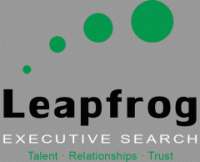Leading Effectively in the Fourth Revolution
Category : 2019
“Adapt or die.”
Billy Beane’s iconic line from the movie Moneyball, captured the motivating force behind the Oakland Athletics revolutionary use of sabermetrics, not talent scouts to select players for the Oakland A’s baseball team. With a payroll a fraction of the size of other major league teams, Beane enlisted Paul DePodesta – a Harvard grad that loved numbers and sports, to leverage statistical analysis of one critical competence (how often a hitter gets on base) to evaluate and select players.
Over a decade ahead if it’s emergence, Billy Beane modeled the essence of the Fourth Revolution-the integration of real-time data with the physical world to accelerate decisions, manage processes, and drive results. “Industry 4.0 combines relevant physical and digital technologies, including analytics, additive manufacturing, robotics, high-performance computing, natural language processing, artificial intelligence and cognitive technologies, advanced materials, and augmented reality,” (Deloitte, Forces of Change: Industry 4.0).
This digital to physical to digital integration poses endless possibilities for companies that embrace this new reality and near certain demise to the organizations that ignore or resist these forces of change. World Economic Forum founder Klaus Schwab states, “We must develop a comprehensive and globally shared view of how technology is affecting our lives and reshaping our economic, social, cultural and human environments. There has never been a time of greater promise, or greater peril.”
The Chief Human Resources Officer is in a strategic position to accelerate the leadership conversion from business as a linear process to business as a living organism. A company can only change its DNA as human resources hires and develops leaders that will recognize and adapt to the dynamics of this next revolution. Effective Industry 4.0 leaders will:
Demonstrate Digital Leadership
In March 2019, Harvard Business Review reported that of the $1.3 trillion invested in digital transformation last year, $900 billion didn’t achieve the intended outcome, leaving digital transformation as the #1 concern for CEOs and senior executives. It appears the lack of traction in DT efforts has more to do with leaders than dollars.
As digital transformation becomes the norm more than an aspiration, organizations that want to compete-or even survive, will require leadership that is ” fast-paced, cross-hierarchical, responsive, cooperative, and team-oriented,” (Oxford Leadership, Leadership 4.0 in the ‘Digital Age’). 4.0 leaders will see greater success when they give employees better/more transparent access to information, allow for more independent decision-making, create flexible working environments, and provide more frequent and useful performance feedback. A human resources organization that can lead this kind of disruption increases its likelihood of being considered a valued partner to business unit leaders across the enterprise.
Digital leaders must become as comfortable using data to drive transformation as they are using financials to drive decisions. These leaders relentlessly pursue self-development, recognizing credibility and impact with employees in the 4.0 world is determined by knowledge and competence in the current environment, rather than by a title or number of years in an industry. HR is uniquely positioned to equip leaders with the new mix of capabilities needed to embrace digital transformation.
Encourage Cognitive Diversity
Without a high level of cognitive diversity, functional bias (thinking there is only one way to do something) severely limits the ability of teams to problem-solve, make decisions. collaborate, and drive change. Again, the CHRO and HR team are in a pivotal position to help the organization value and promote diversity of thought as much as they require diversity in gender, ethnicity, and age.
When leaders hire in their own image it creates a comfortable environment of parallel thinkers where conflict is rare, and results are uninspiring. A cognitively diverse team more readily encounters a second or third or fourth perspective that results in disagreement, conflict, and eventually settling on a course of action that is far better than the first option. A company without cognitive diversity as a core competence will struggle in the 4.0 world.
Make the Current Model Uncomfortable
A radically changed environment demands radically different leaders. A seismic shift in how people lead won’t be accomplished through a one-time executive workshop or a rousing speech at the next all-hands meeting. Our brains are wired to most often see an event, situation, or change as a threat, not an opportunity. Our fight, flee, or freeze instincts kick into motion and we begin protecting ourselves from or outright resisting the change. People embrace a change when their discomfort with a current situation exceeds their fear of or resistance to change. HR leaders can accelerate the journey to Fourth Revolution leadership by working with the rest of the leadership team to make it uncomfortable for people to operate as they have before.
This model naturally translates to making every leader a performance coach, reinforcing the desired behavioral changes and helping people see when they aren’t adapting so they can more easily self-correct behavior. Organizations that foster growth and change must be comfortable with failure as people make the journey from where they are to where they want to be. These companies must be equally comfortable showing what a desired change looks like and showing to door to those who refuse to adapt.
Brian Bacon, Chairman and Founder of Oxford Leadership captured the heart of 4.0 leadership when he said. “Leadership in the 4th Industrial Revolution will be defined by the ability to rapidly align & engage empowered, networked teams with clarity of purpose & fierce resolve to win.”
